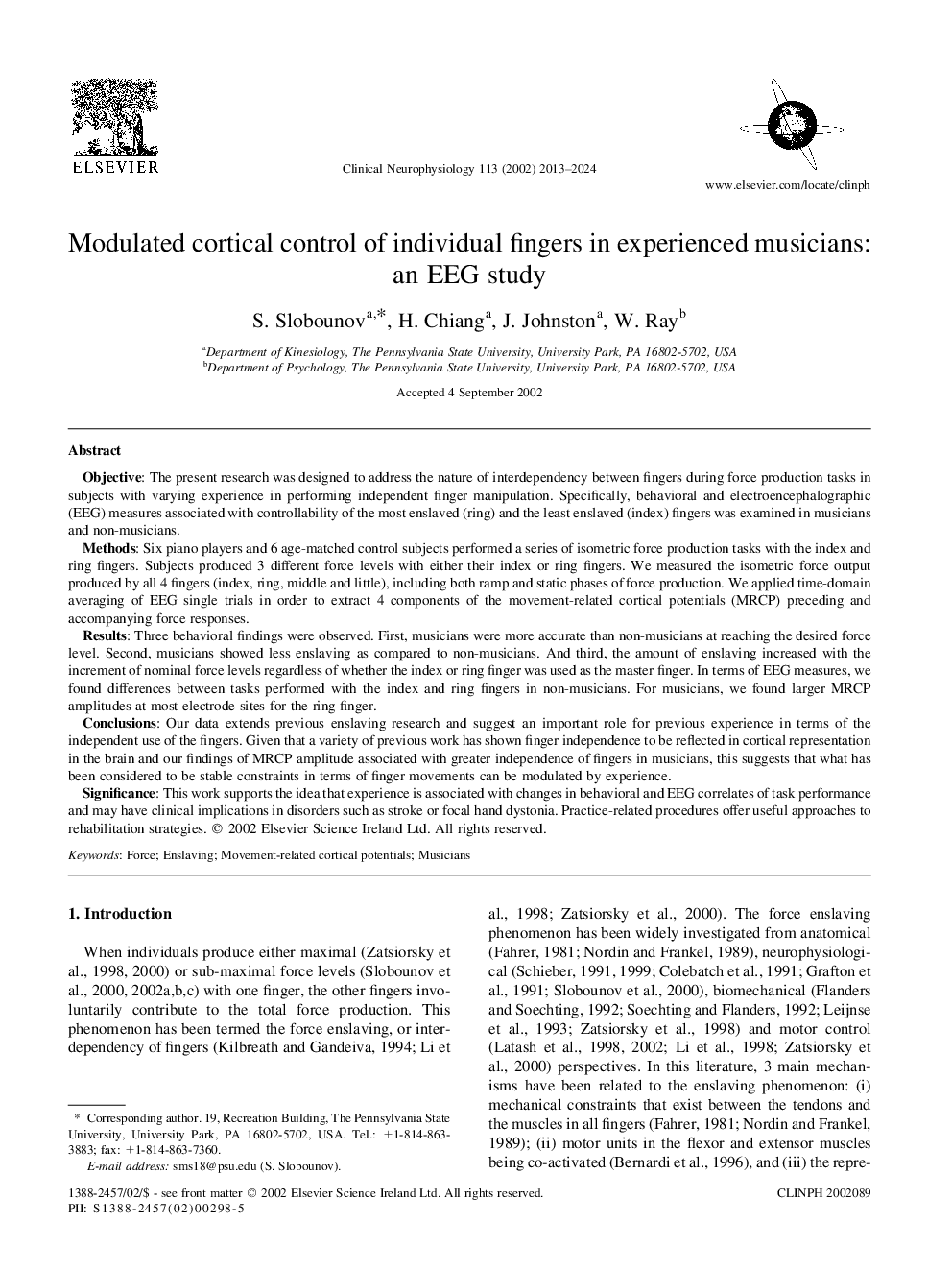| Article ID | Journal | Published Year | Pages | File Type |
|---|---|---|---|---|
| 3049088 | Clinical Neurophysiology | 2013 | 12 Pages |
Objective: The present research was designed to address the nature of interdependency between fingers during force production tasks in subjects with varying experience in performing independent finger manipulation. Specifically, behavioral and electroencephalographic (EEG) measures associated with controllability of the most enslaved (ring) and the least enslaved (index) fingers was examined in musicians and non-musicians.Methods: Six piano players and 6 age-matched control subjects performed a series of isometric force production tasks with the index and ring fingers. Subjects produced 3 different force levels with either their index or ring fingers. We measured the isometric force output produced by all 4 fingers (index, ring, middle and little), including both ramp and static phases of force production. We applied time-domain averaging of EEG single trials in order to extract 4 components of the movement-related cortical potentials (MRCP) preceding and accompanying force responses.Results: Three behavioral findings were observed. First, musicians were more accurate than non-musicians at reaching the desired force level. Second, musicians showed less enslaving as compared to non-musicians. And third, the amount of enslaving increased with the increment of nominal force levels regardless of whether the index or ring finger was used as the master finger. In terms of EEG measures, we found differences between tasks performed with the index and ring fingers in non-musicians. For musicians, we found larger MRCP amplitudes at most electrode sites for the ring finger.Conclusions: Our data extends previous enslaving research and suggest an important role for previous experience in terms of the independent use of the fingers. Given that a variety of previous work has shown finger independence to be reflected in cortical representation in the brain and our findings of MRCP amplitude associated with greater independence of fingers in musicians, this suggests that what has been considered to be stable constraints in terms of finger movements can be modulated by experience.Significance: This work supports the idea that experience is associated with changes in behavioral and EEG correlates of task performance and may have clinical implications in disorders such as stroke or focal hand dystonia. Practice-related procedures offer useful approaches to rehabilitation strategies.
